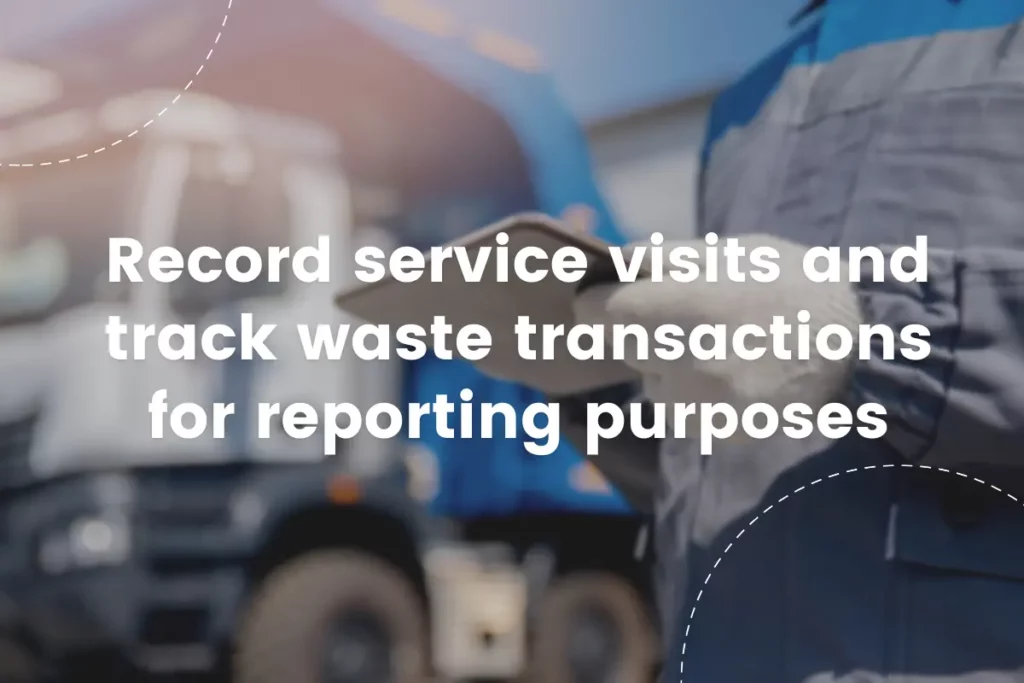*Location – Collabit/Waste Sector
Let’s talk about reporting waste transactions!
Waste transactions are a big part of compliance management across multiple industries. Compliance management is a challenge for businesses when adhering to regulations using software which is out of date, has complicated workflow through multiple platforms or software which is not fit for purpose.
Whatever your industry you will have a requirement to track, complete and report findings from a service visit. Afterwards service companies can manage the results on site that weren’t within the right specification and create follow up tasks to remedy the situation swiftly while keeping their clients always informed.
That’s where Collabit comes in handy and takes it to the next level of efficiency!
Collabit creates the waste transactions in the system, as each of them require a formal resolution. You can then review, manage, and resolve any issues individually or you can pick them up by site or customer.
When the waste transaction is being created, it gets its own unique number.
Let’s use an example, shall we? Imagine that a driver went onto a client’s site and created a transaction there, by answering questions about the ‘Duty of Care Notice’ or ‘Hazardous Waste Transfer Note’ on their mobile device. If there were to be an issue it would automatically generate within our system, based on the answers to those questions. Sounds simple and efficient because it is!
One great thing to note; you can set up whatever rules you like because the system is completely customisable. This means that you can have whatever questions or forms you like, followed by whatever answers you like. Then you simply decide, which ones of those answers are correct, and which are not, as well as you decide what course of action is required depending on the outcome. Sometimes it can just be a recommendation on the report that doesn’t need its own unique number because these still stay there in the system until you’ve fixed them.
That leads to another feature, you will surely find useful – you get to choose whose responsibility it is to deal with the issue. Is it your company’s responsibility or does it fall into the hands of your customer? While these are defaulted as being the customer’s responsibility, you can easily change it and have it set in the system as your responsibility.
Moving on (yes, there is still so much more you can achieve with Collabit!); you can also create a support ticket right in that system and once you do that, you can go through a quoting process, using the sales CRM of Collabit. This also means that if there’s ever any further work (in a remedial sense or otherwise) from this issue, you sort it out right there. You can also just log work calls, tasks, etc. that you’ve done collectively with the customer to resolve the issue and then you can close it off as a complete.
Moreover, on their side of the portal, the customers can also see issues on any of the sites that they’ve got, which you are working on. This allows them to work with you on solving these tickets. You can give them your recommendations and then they can close them off as done from the customer’s side of the portal, so you are in perfect communication throughout the whole process.
As you can see, Collabit makes your workflow a lot more trackable, so whenever you need to audit what’s happened with issues, you’ll have all the information where you need it!
It’s easy, it’s simple, it’s customised – it’s Collabit. So, how can we make your company more efficient?





